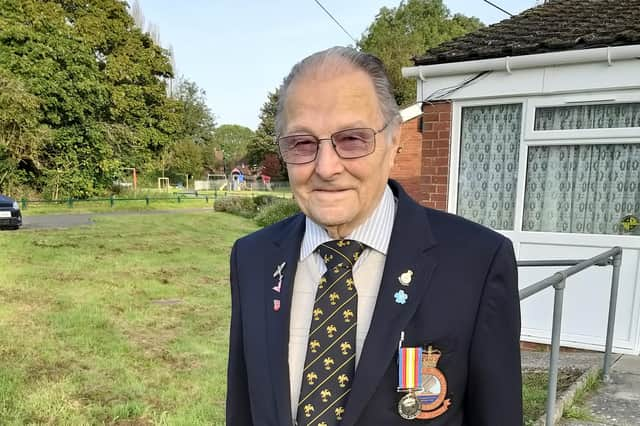Kenilworth man describes the drama of surviving atomic tests after finally receiving his Nuclear Test Medal


Kenilworth resident Ray Edkins has described the drama of surviving atomic tests and finally receiving his Nuclear Test Medal.
Born in Kenilworth in 1938, Ray Edkins did his National Service between 1956 and 1958. Soon after postings to Malvern and Maidstone, Ray remembers the excitement of learning his next posting would be overseas.
Advertisement
Hide AdAdvertisement
Hide AdHe said: “We were not told where we would be going or what for, we only knew the exercise as Operation Grapple” - the development programme for British nuclear weapons.
Flying from Heathrow via several American cities, the ‘task force’ eventually landed on Kiribati (Christmas Island) in the Pacific Ocean. Living under canvas, Ray was responsible for the maintenance of Bedford trucks used in work to extend the existing runway to enable larger planes to land to bring equipment and supplies required to equip and feed the growing population; and to transport a few hundred local nationals to safer locations.
Four Vickers Valiant planes brought components for the bombs: the atomic test, Grapple Y, was a test conducted in November 1957. Ray vividly remembers the day as he drove the Bedford truck loaded with colleagues to a safe site 10 miles away from the camp. Sitting behind a tree, Ray’s sergeant told him to shield his eyes with welder-type goggles and to cover these with his hands.
Suddenly there was flash, after which the sergeant said it was safe to stand up to watch the red/orange glow of the fire inside the black mushroom cloud.
Advertisement
Hide AdAdvertisement
Hide AdThen came the “blast”, hot air burning through the body, strong enough to blow people over.
Remaining on Christmas Island until May 1958, he returned to the UK to complete his National Service before joining Clinton Garage and, later, Lockheed Automotive Products in Leamington, retiring at the age of 65.
Ray joined the British Nuclear Tests Veterans Association which teamed up with LABRATS (legacy of the atomic bomb recognition for atomic test survivors), to represent the thousands of servicemen and service women who are directly affected by the test programmes across the world.
Last week he finally received The Nuclear Test Medal, made available to all veterans from November 2022, presented in recognition of the significant contribution to Britain’s nuclear tests programmes. Ray’s story reflects the bravery of young service personnel; he should be proud of his efforts.